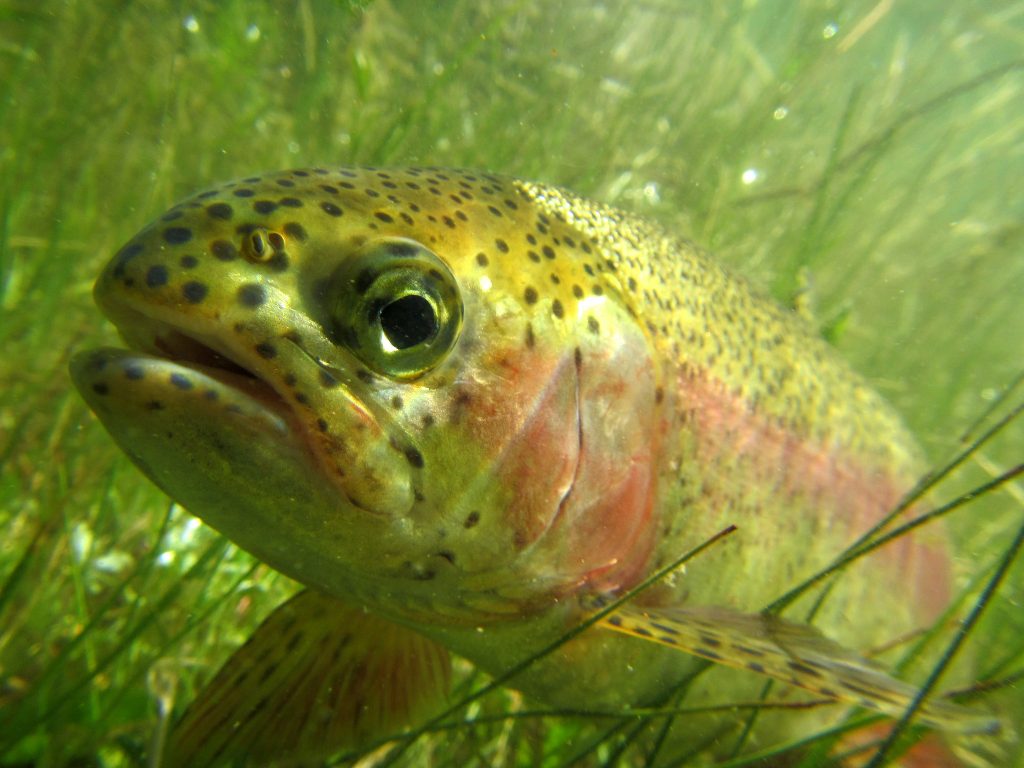
Research reveals mature parasites effectively alter their hosts’ behavior to ensure their own survival.
This discovery manifests itself within eye flukes that live in fish species and require consumption by birds in order to reproduce. The particular parasite Diplostomum pseudospathaceum begins its life cycle through eggs that are born in a bird’s digestive tract and deposited out through its feces.
The water-borne eggs then hatch into larvae that take up residence in freshwater snails, en route to infect the skin of rainbow trout, their next selected host.
Rainbow trout (Oncorhynchus mykiss) are native to cold water streams and oceans in Asia and North America. They weigh between one and five pounds and are distinguished by a reddish stripe running laterally down their abdomens.
Scientists out of Severtsov Institute of Ecology and Evolution in Moscow tested a young group of these fish infected with the common eye parasite and a control group that was uninfected. Their study focused on behavioral traits, including the fishes’ preferred water inhabitation depths and responses to predation.
Results revealed that immature parasites did not have behavior-altering effects on the fish, but that mature parasites actually changed rainbow trouts’ anti-predatory responses.
Rainbow trout that contained active infections of mature eye flukes swam more actively and stayed closer to the surface, in essence increasing their chances of being eaten by a bird. These parasites are ready to reproduce and therefore seeking out the necessary environment — in this case, bird stomachs.
In addition, researchers simulated avian attacks and concluded that although fish infected with Diplostomum pseudospathaceum froze similarly to uninfected fish, they resumed swimming sooner.
The complete study is published in Behavioral Ecology and Sociobiology.




